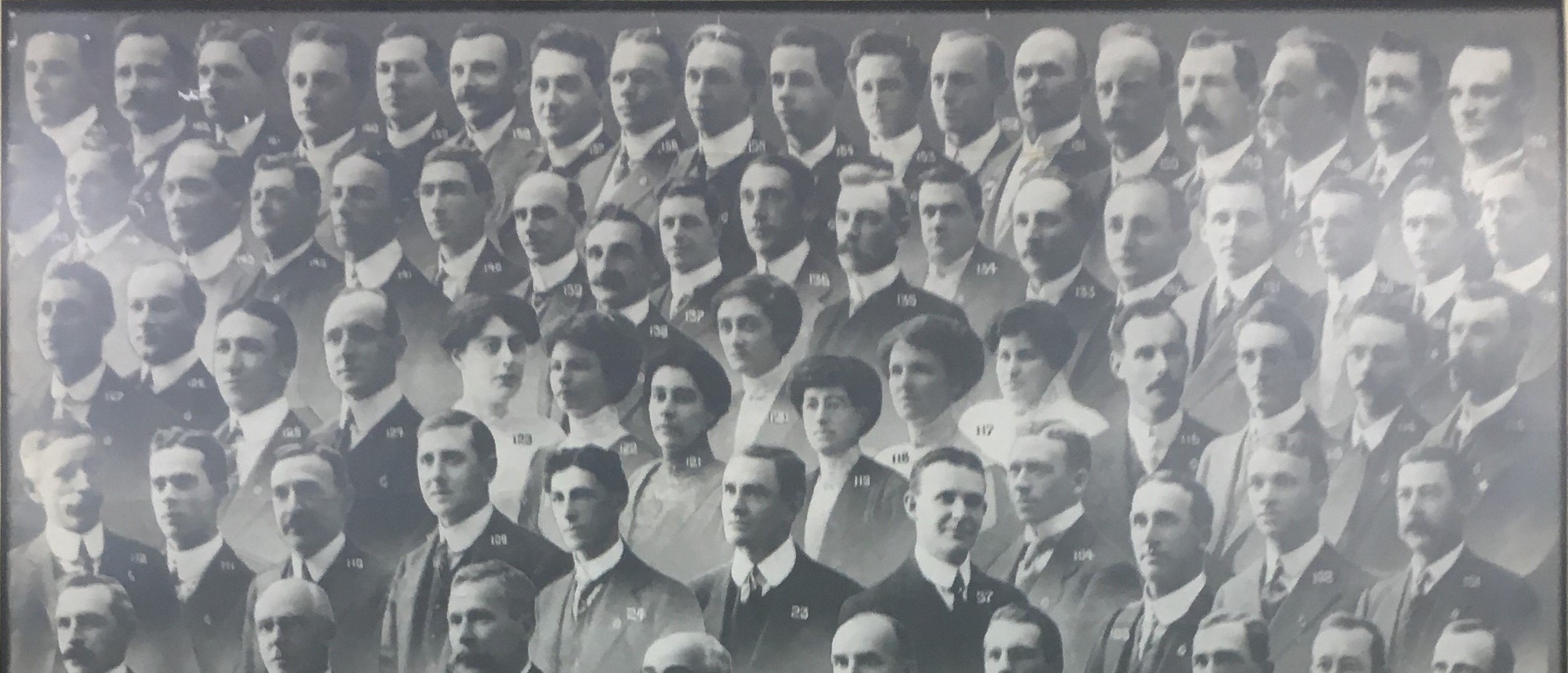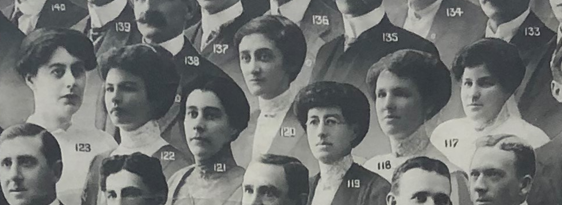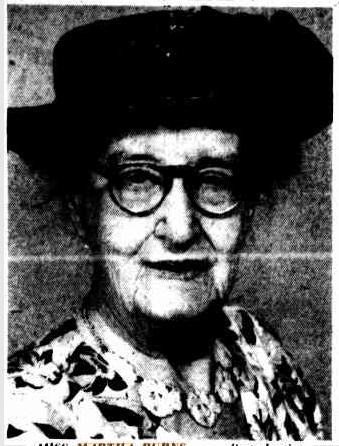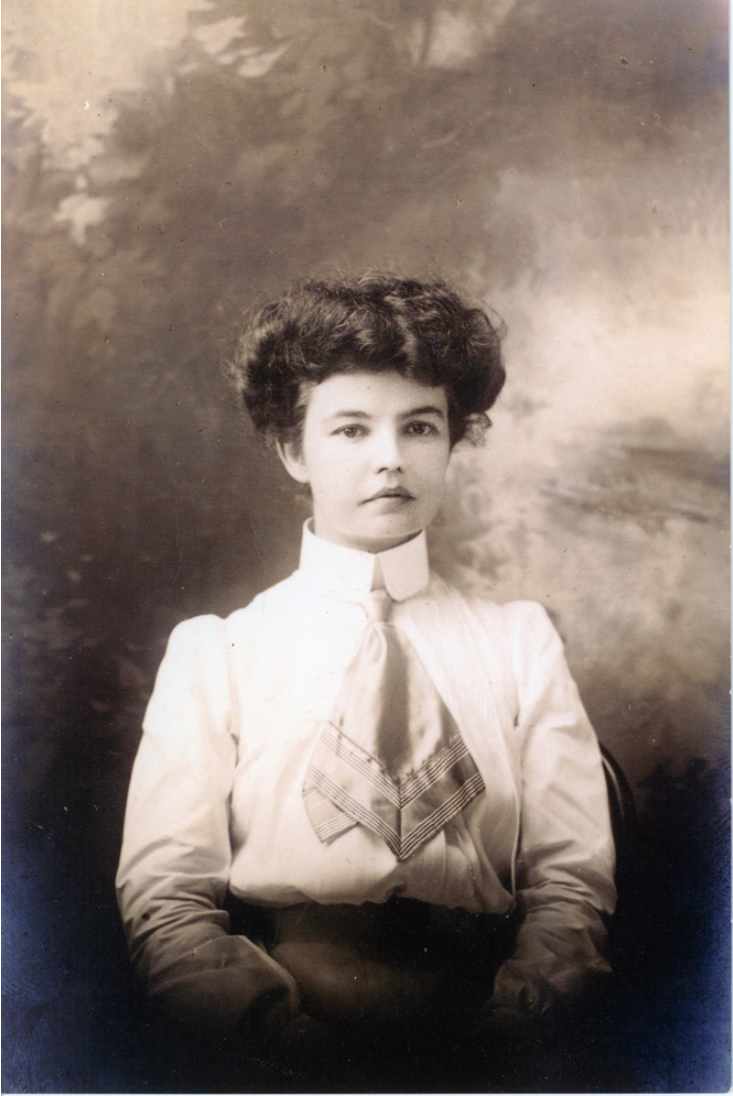Who was Queensland's first female dentist?
There is a little controversy in the history of dentistry as to who was actually the very first female dentist to qualify and practice in Queensland.

Australian Dental Congress 1912, Commemorative portrait. ADAQ collection.
This is due to the state of flux in which dentistry still existed when women were first recorded as performing dental treatment. It was at a time when dental schools were slowly replacing the old apprenticeship system, which terminated in Queensland in the 1920s.
Therefore, we must celebrate more than one ‘first’: Martha Burns is generally recognised as being the first to have a dentistry degree in Queensland (although she studied in Melbourne), while Myra Rendle McKenzie is credited to be the first to complete an apprenticeship and actually practice independently as a dentist in the state.
We have both Martha and Myra in a beautifully crowded commemorative portrait of the third Australian Dental Congress, held in Brisbane in 1912. They are bunched together with five female colleagues, in a sea of male counterparts.

The Queensland ladies: Huet (118), Burns (119) and Rendle (122)
The only other Queenslander in this roll is Miss L.E. Huet. We don’t know much about her, except that she was the daughter of a travelling dentist, who emigrated with his family from Britain in 1888; she trained with her father until 1908, then practiced independently for 30 years. Upon retirement in 1937, Miss Huet was presented a ‘wallet of notes’ by the sub-branch of the Dental Association (see on Trove the local paper even reported this).
Martha Burns

Martha Burns portrayed in the Courier Mail, 1921. National Library of Australia.
Martha Burns (1873-1959) was the first woman to qualify (graduate) in dentistry in Queensland, by taking the Licentiate of Dental Surgery (LDQ), a dentistry diploma, in 1907. She studied in Melbourne, though, at the time there were no university courses in the Sunshine State.
Originally trained as a nurse at Brisbane General Hospital (1900), Martha decided to switch to dentistry. She famously convinced her father, a Scottish Engineer for Harbours and Rivers, to allow her apprenticeship by saying: “we would both be building bridges”.
The Dental Board of Queensland Rough Register 1903 entry lists Martha as a pupil at Dodds and McLeod. At least two years of apprenticeship were still required.
Martha is recorded as a delegate to the International Dental Congress in London in 1914. Still in London as the Great War began, she served as Nursing Sister and Dental Surgeon in the Australian Voluntary Hospital in France. Her motorist skills were also apparently very sought after. She returned in 1915 and practiced dentistry privately until 1932.
Martha contributed early to dentistry literature: her 1921 article in the Australian Journal of Dentistry is one of the first written statement by a former active service person on the importance to have dental professionals on the front line in war. Her paper may even have sped the formation of the Dental Corps in Australia (Ref.: The Express & Telegraph, Adelaide, Tuesday 23 August 1921).
Martha was very active in many voluntary organisations and women’s circles, and used her influence to promote good oral health habits.
For example, addressing a women’s club in 1930, she stressed that: “so much depended upon the teeth that everyone should be taught to realise how necessary it is to look after them from the very start. Mothers should understand how to take care of their children's first teeth, so that when the second set came, they would be healthy.”
Burns was also vice-president of the Odontological Society of Queensland in 1928, the year the association was reborn as ADAQ. She is therefore one of the two female foundation members, the other being Miss LE Huet. Martha was made honorary member in 1952.
Another great Queensland dentist, the late Dr Vivienne Cowlishaw (1935-2019) once recalled meeting Martha Burns:
“…In my student years I had the privilege of meeting Miss Burns at a dinner held for women dentists at the 13th Australian Dental Congress in Brisbane in May 1956. This woman who had graduated 50 years before me was a most formidable but interesting lady. During that one evening Miss Burns finally convinced me (when my father could not) that Dentistry could and should be my life interest, which has turned out to be the case.
After that one meeting with Miss Burns, I still have the concept of travelling in her footsteps, rather than making a new pathway, no matter what anyone may say… I remember to this day her fierce independence and intellect, a woman who was a passionate advocate of the dental profession, and of life.”
Dr Cowlishaw was foundation member of AMARA Study Group in 1965 and was celebrated as a strong advocate for women in dentistry. The AMARA study group continues today to update and further education and support for women in dentistry.
Myra Rendle Mackenzie

Portrait of Myra Rendle, 14 December 1911. Townsville City Libraries
We think Martha Burns was not the first woman to register or to practice dentistry in the Sunshine State: it was probably Myra Rendle, daughter of Dr Richard Rendle (FRCS, Eng.).
Myra practised in Brisbane from 1899 until she married and moved to New Zealand in 1916.
Myra began her four-year apprenticeship at 14 years old with the Brisbane dentist Robert Thomason. She was only 18 when she opened her own practice in 1899, on the corner of Queen and Edward Streets.
The Brisbane Courier considered it a sign of progress for Queensland:
“The profession of dentistry has been practised for some time past by women dentists in America, and there are also several practising successfully in Melbourne. Brisbane is now following suit, and will add the name of Miss Myra Rendle to the list of dental practitioners. Miss Rendle is a daughter of the well-known physician, Dr R. Rendle, M.D. of this town, and she is a pupil of the late Dr R.B. Thomason.”
Her father’s support was paramount: Richard Rendle was a respected physician and was convinced his daughter was of ‘above average mental capacity’ and accepted her wishes to pursue a career.
The apprenticeship system made it somewhat easier for (upper-middle class white) women to access dentistry as a profession: it allowed women to operate in a family environment, and therefore be protected, or rather controlled, by it.
Moreover, in the remoteness of rural Australia, shortages of dentists and other health professionals meant that women were easily accepted as practitioners (Comino-Cerny). In fact, Myra set up practice in Flinders St, Townsville in 1901, after travelling around North Queensland.
Myra joined the Odontological Society of Queensland in 1911. In 1916, she married William Seaforth Mackenzie in Wellington, New Zealand. After her husband fell in action in World War I, Myra returned to Australia with her son, but did not practice dentistry again, except for a brief locum in Brisbane.
References
Evening News (Rockhampton, Qld. : 1924 - 1941), Saturday 24 April 1937, page 8 http://nla.gov.au/nla.news-article198774522
Brisbane Courier, 9 March 1899, pp. 4 & 6; 30 November 1900, p. 2. State Library of Queensland.
"To-day's personality." The Courier-Mail (Brisbane, Qld: 1933 - 1954) 5 May 1954: 14. Web. 2 Mar 2021 <http://nla.gov.au/nla.news-article50604545>
Vivienne Cowlishaw’s manuscript on Martha Burns, ADAQ archives.
Comino-Cerny, Z.J. 2000. Margaret Estelle Barnes And Annie Praed - Australia'S First Women Graduates In Dentistry: Twentieth Century Femininity And Professionalism In Dentistry, The University of Sydney.
Fielding, T. Myra Rendle Mackenzie – dentist. 26 June 2018. Women of the north blog .https://womenofthenorth.blog/2018/06/26/myra-rendle-mackenzie-dentist/
King,M, 'Burns, Martha (1873–1959)', People Australia, National Centre of Biography, Australian National University, https://peopleaustralia.anu.edu.au/biography/burns-martha-29948/text37088, accessed 26 February 2021.
McDonald, L, 1995. Rockhampton: A History of City and District, University of Queensland Press
Romaniuk, Kon, ‘Pioneer Woman of Dentistry Myra Rendle Mackenzie’, ADA News Bulletin, September 1994, pp. 32-35.